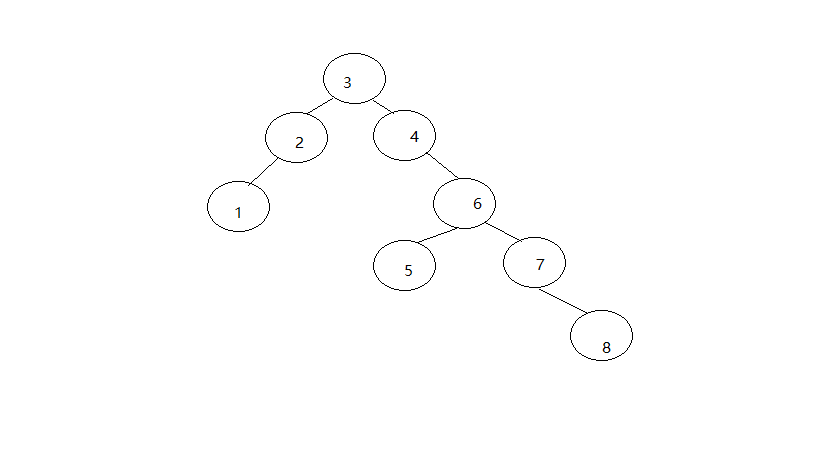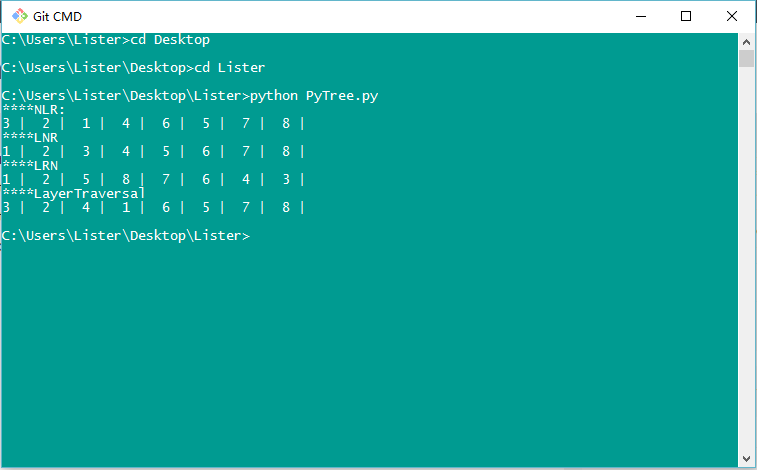Python定义二叉树及遍历 Python定义二叉树及4种遍历方法实例详解
亨利何 人气:0本文实例讲述了Python定义二叉树及4种遍历方法。分享给大家供大家参考,具体如下:
Python & BinaryTree
1. BinaryTree (二叉树)
二叉树是有限个元素的集合,该集合或者为空、或者有一个称为根节点(root)的元素及两个互不相交的、分别被称为左子树和右子树的二叉树组成。
- 二叉树的每个结点至多只有二棵子树(不存在度大于2的结点),二叉树的子树有左右之分,次序不能颠倒。
- 二叉树的第i层至多有2^{i-1}个结点
- 深度为k的二叉树至多有2^k-1个结点;
- 对任何一棵二叉树T,如果其终端结点数为N0,度为2的结点数为N2,则N0=N2+1
2. 二叉树

生成二叉树
# init a tree
def InitBinaryTree(dataSource, length):
root = BTNode(dataSource[0])
for x in xrange(1,length):
node = BTNode(dataSource[x])
InsertElementBinaryTree(root, node)
return root
print 'Done...'
前序遍历
# pre-order
def PreorderTraversalBinaryTree(root):
if root:
print '%d | ' % root.data,
PreorderTraversalBinaryTree(root.leftChild)
PreorderTraversalBinaryTree(root.rightChild)
中序遍历
# in-order
def InorderTraversalBinaryTree(root):
if root:
InorderTraversalBinaryTree(root.leftChild)
print '%d | ' % root.data,
InorderTraversalBinaryTree(root.rightChild)
后序遍历
# post-order
def PostorderTraversalBinaryTree(root):
if root:
PostorderTraversalBinaryTree(root.leftChild)
PostorderTraversalBinaryTree(root.rightChild)
print '%d | ' % root.data,
按层遍历
# layer-order
def TraversalByLayer(root, length):
stack = []
stack.append(root)
for x in xrange(length):
node = stack[x]
print '%d | ' % node.data,
if node.leftChild:
stack.append(node.leftChild)
if node.rightChild:
stack.append(node.rightChild)
Result

二叉树的思想重在“递归”, 并不是非要用递归处理,而是去理解二叉树递归的思想
完整代码段
# -*- coding:utf-8 -*-
#################
### implement Binary Tree using python
### Hongwing
### 2016-9-4
#################
import math
class BTNode(object):
"""docstring for BTNode"""
def __init__(self, data):
self.data = data
self.leftChild = None
self.rightChild = None
# insert element
def InsertElementBinaryTree(root, node):
if root:
if node.data < root.data:
if root.leftChild:
InsertElementBinaryTree(root.leftChild, node)
else:
root.leftChild = node
else:
if root.rightChild:
InsertElementBinaryTree(root.rightChild, node)
else:
root.rightChild = node
else:
return 0
# init a tree
def InitBinaryTree(dataSource, length):
root = BTNode(dataSource[0])
for x in xrange(1,length):
node = BTNode(dataSource[x])
InsertElementBinaryTree(root, node)
return root
print 'Done...'
# pre-order
def PreorderTraversalBinaryTree(root):
if root:
print '%d | ' % root.data,
PreorderTraversalBinaryTree(root.leftChild)
PreorderTraversalBinaryTree(root.rightChild)
# in-order
def InorderTraversalBinaryTree(root):
if root:
InorderTraversalBinaryTree(root.leftChild)
print '%d | ' % root.data,
InorderTraversalBinaryTree(root.rightChild)
# post-order
def PostorderTraversalBinaryTree(root):
if root:
PostorderTraversalBinaryTree(root.leftChild)
PostorderTraversalBinaryTree(root.rightChild)
print '%d | ' % root.data,
# layer-order
def TraversalByLayer(root, length):
stack = []
stack.append(root)
for x in xrange(length):
node = stack[x]
print '%d | ' % node.data,
if node.leftChild:
stack.append(node.leftChild)
if node.rightChild:
stack.append(node.rightChild)
if __name__ == '__main__':
dataSource = [3, 4, 2, 6, 7, 1, 8, 5]
length = len(dataSource)
BTree = InitBinaryTree(dataSource, length)
print '****NLR:'
PreorderTraversalBinaryTree(BTree)
print '\n****LNR'
InorderTraversalBinaryTree(BTree)
print '\n****LRN'
PostorderTraversalBinaryTree(BTree)
print '\n****LayerTraversal'
TraversalByLayer(BTree, length)
希望本文所述对大家Python程序设计有所帮助。
加载全部内容